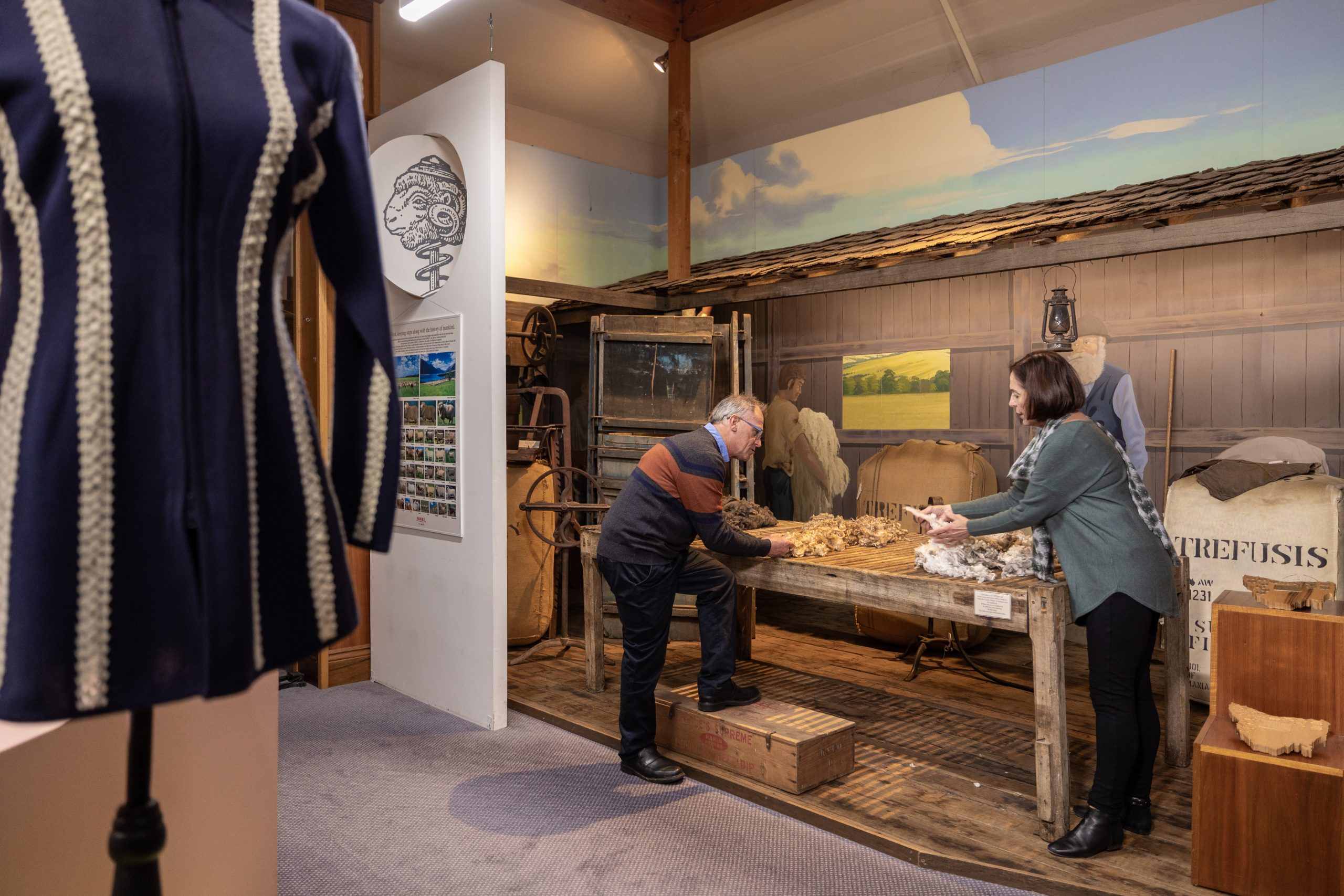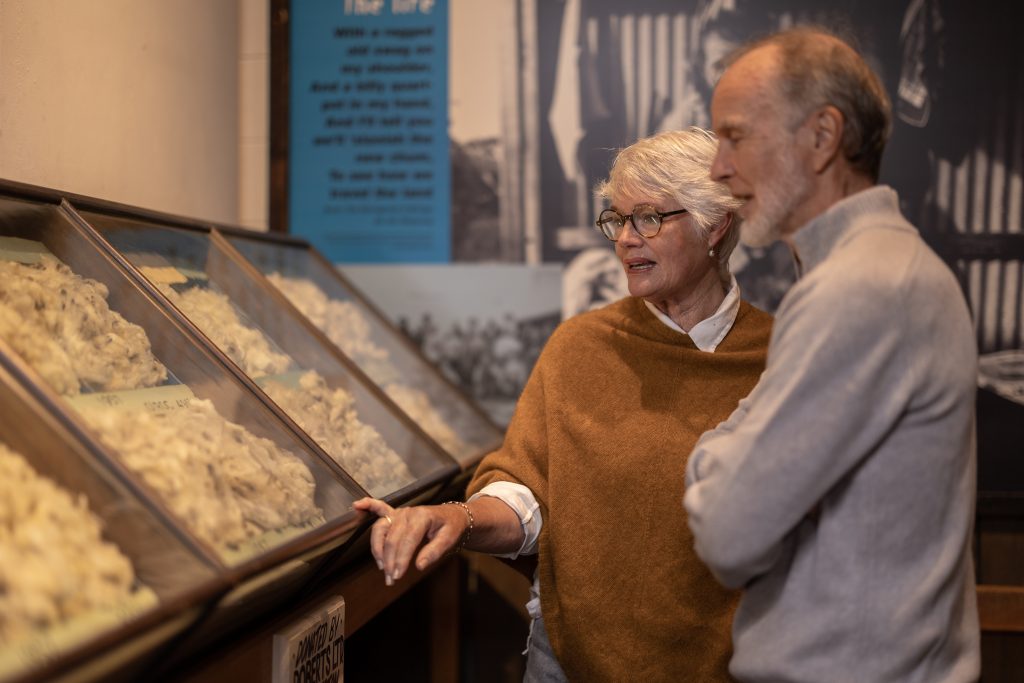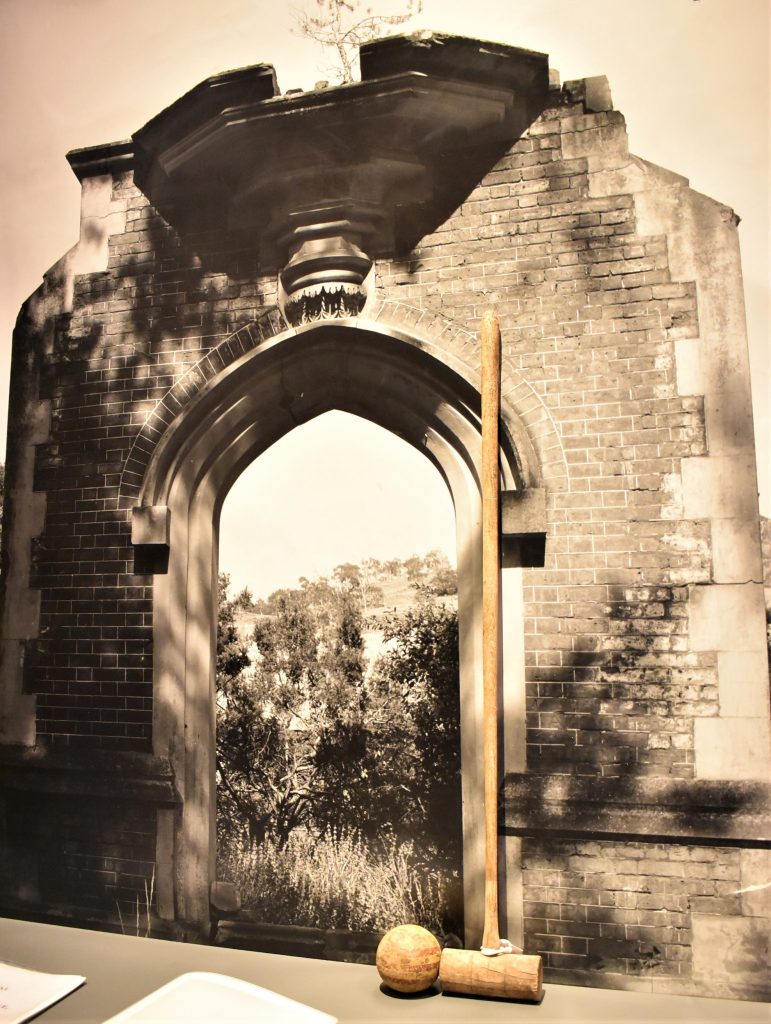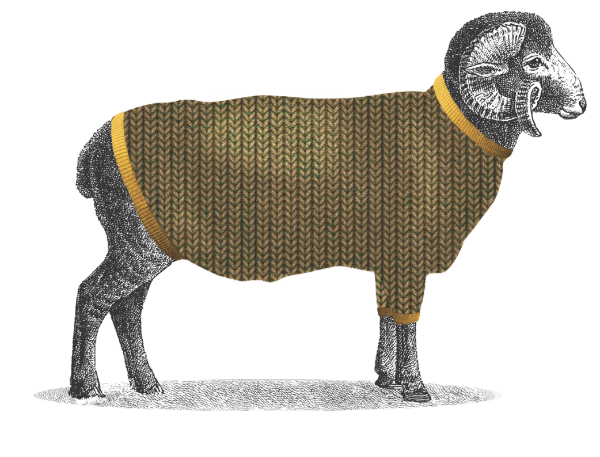Through its heritage exhibition area, The Tasmanian Wool Centre is committed to the historical preservation of the village and immediate regions, by collecting stories, images and artifacts. The Centre also has a commitment to providing a repository for the information and artifacts relating to the establishment and on-going development of the wool industry for the region.
In its formative years, Ross benefited from the prosperity of its surrounding land owners who directly employed villagers or supported the businesses that developed. As a result, Ross evolved into the beautiful Georgian village it is today.
This story is told in the Wool and Heritage galleries with many artifacts, pictures and documents on display. The smell of sheep’s wool pervades the air as you enter the Wool exhibition. A re-created shearing shed complete with thrown fleece on its sorting table and manual wool press provide a glimpse of past times. Included as permanent exhibits on loan from the Queen Victoria Museum and Art Gallery in Launceston are “The Canticle, 1966” a large woollen tapestry by John Coburn, “Primary Bind” 1985, a sculpture by Les Kossatz and Stephen Walker’s Ermenigildo Zegna Perpetual Trophy 1963.
In the adjoining room, the History Gallery provides snapshots of significant milestones in Ross’ development. The Ross Bridge, Female Factory and Horton College are permanent exhibits together with changing short-term exhibitions. For the ancestry buffs there are a number of registers listing the female convicts and male ticket of leave workers, together with copies of the Anglican Church burial registers in the early years of settlement.

Sculpture - Primary Bind, 1985 - Les Kossatz. On loan from QVMAG.

Tasmanian Wool Centre

Wool samples on display

Victorian Slipper Bath

Horton College Display

Interactive wool display

Memorial to Sarah Anne Ellis, carved by Daniel Herbert




 Tasmanian Wool Centre Museum
Tasmanian Wool Centre Museum